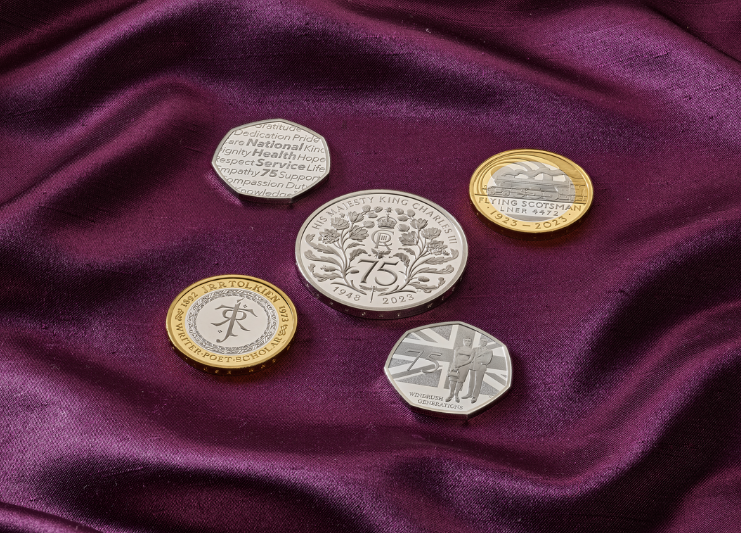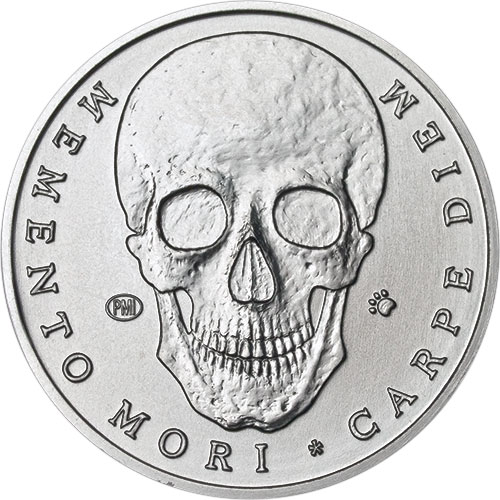Top Facts On Plaster Prague Mint Coins
Wiki Article
What Is The Model Of A Plaster Scanned In Order To Make A Digital 3d Model For Gold Coins Or Medals?
Scanning a model made of plaster to create a digital 3D model for gold coins or medals involves using specialized equipment to capture the physical maquette's details and dimensions in an electronic format. This digital replica serves many reasons during the manufacturing process.
3D Scanning Technique- High resolution 3D scanners are able to capture dimensions and details on the plaster models. The scanners can are able to capture geometry and measurements by using a variety of methods, including laser scanning or structure light.
Surface Information Capture - The scanner emits laser or light beams onto the model's surface. The scanner captures the reflections and distortions. This information is then used to create a model.
Data collection- The scanner captures data while it moves across the plaster model. This creates a digital representation that includes the contours of the model, its geometry and more.
Conversion into a 3D Model. The collected information is processed using special software which reconstructs it into an electronic 3D model. This model reproduces the physical properties and dimensions of a maquette made of plaster.
Why do we need to create an Digital 3D Model
Precision and Replication- Digital 3D models allow for exact replication of the physical model's details and dimensions. This guarantees that the final gold medals and coins will exactly match the original design.
Digital models may be easily altered or refined. Designers are able to modify the design without altering the maquette made of plaster.
Compatible with Manufacturing Processes: Digital 3D models can be utilized with different manufacturing methods, such as 3D printing and CNC machining. This allows for the rapid production of molds and other dies.
Digital 3D models can be used to archive and document the design. They can be stored digitally to be used as a reference for future use or reproductions as well as historical documentation.
By scanning the model and then creating a digital 3D model, manufacturers and designers can streamline the production process, ensure accuracy in replication, and leverage advanced manufacturing technologies to make gold medals or coins with a high degree of precision and fidelity to the original design. Follow the top Scanning and 3D Modeling Prague Mint gold medals more tips. including liberty gold coin, silver price jm bullion, best place to buy gold bars, buy gold silver, buying silver, gold pieces for sale, apmex gold, gold bullion gold, gold price jm bullion, 1oz gold and more.

How Can Highly-Skilled Engraving Artists Improve The Design On Gold Coins And Medals?
Highly skilled engravers contribute to the refinement and enhancement of the design for gold medals or coins. They work on the hub that works or die. Their skills allow them to add complex details and fine tune the design. Check out how they achieved this Evaluation of Working Hub.
Engravers start by examining the working hub or die made from the master hub or the Janvier machine. They evaluate the quality of the transfer and the depth.
Correction of mistakes
Engravers fix any inconsistencies or imperfections in the transfer design. They can use precision tools to rectify minor mistakes, adjust the depths, or refine certain elements to ensure that they are uniform.
Enhancing Details-
Using specialized engraving tools like burins, gravers, or pneumatic engraving machines skilled engravers create elaborate details to the designs. They cut or engrave the hub's surface to create fine lines, textures, or letters in accordance with the design.
Depth & Dimensional Enhancement
The engravers alter the contours and depths of the designs to give it the illusion of depth and dimensions. This process involves changing the cut's depth to highlight specific elements and create the illusion of realism.
Texture & Finishing Touches
To increase the aesthetic appeal of engravings, they can be used to add texture or finish on specific areas. To create various surface textures techniques such as stippling, frosting or shading are employed.
Inspection and Quality Control
The engravers inspect and check each design during the entire engraving process to make sure that the engraving meets the standards of clarity, accuracy, and aesthetics.
Collaboration, artistic interpretation and collaboration
Engravers often work in conjunction with designers or other artists to understand a design in a precise manner. Their creative ability and interpretation can elevate a design by adding subtle details or enhancing the design based on their artistic perspective.
The capability to manipulate metal using artistry and precision makes them highly skilled. Their attention to detail and meticulous work enhances the look of gold coins or medals and ensures that the final product is in line with intended aesthetics and high quality standards. Read the recommended Czechoslovakia gold medal engravers site advice. including gold dollar, gold eagle coin price, buy gold coins, gold bullion price today, buy gold bars, george washington gold dollar, olympic games gold medal, $5 gold piece, 1 10 oz american gold eagle, 24k gold bullion and more.

What Are The Various Ways In Which Gold Coins Or Medals Are Coated In Order To Safeguard Them?
There are a variety of reasons gold coins and medals may be coated. They can be used for protection, aesthetic enhancement, or to achieve specific effects. These are some of the coating methods that are employed.
Clear Protective coating (Varies) Clear protective layer, such as a polymer or lacquer is put on to protect the surface of the medal or coin from oxidation and tarnishing. The coating is designed to preserve the original appearance of the coin and protects any metal underneath.
Enhancement Appearance
Gold Plating or Gilding - Gold-plated or Gilded coins and medals may undergo gold plating or gilding processes, where a thin layer of gold is sprayed onto the surface. This gives the coin or medal the appearance of a luxurious, glossy finish.
Aesthetic effects
Patinas and antique finishes can be made by chemical treatments, or coatings. This creates an appearance of aged and aged and oxidized.
Coloring and Colorization Certain parts of a medal or coin are colored by using specific coatings or enamels. This is done to highlight certain design elements, add interest, or to create visual interest.
Anti-Tarnish Coatings-
Anti-Tarnish Solutions: For coins or medals with intricate designs or surfaces susceptible to tarnish, anti-tarnish coatings or solutions might be applied. The coatings keep the metal from discoloration and oxidation through time.
Specialized Coatings to Guarantee the security or authenticity of your card.
UV-Reactive Coatings. Some metals and coins are coated with a unique UV-reactive coating that reacts to UV radiation. It can reveal hidden components like encryption or security codes.
Selective Coatings to Contrast
Selective Coating Removal: Some coins and medals have coatings removed from specific areas to make a distinction between the polished and coated surface. This highlights certain design elements.
Each procedure has a particular objective, like to improve the appearance or appearance of metal, enhance protection, increase security, or achieve certain aesthetic effects. These coatings have a significant impact on the appeal and lifespan of gold coins or medals which can increase their value and desirability for collectors or those who are interested in. Take a look at the top coating Prague Mint gold coins site info. including 2000 sacagawea dollar, 2000 p sacagawea dollar, 1 oz gold buffalo coin, gold bullion for sale, gold apmex price, cost of 1 oz of gold, 2000 sacagawea dollar, $50 gold coin, 1975 gold penny, gold silver coins and more.

What Is The Process For Having Gold Coins And Medals Checked For Quality To Ensure That They Meet The Specifications??
Gold coins or gold medals must undergo quality checks following minting in order to ensure precision in surface quality, as well as the conformance to specifications. The checks comprise of a number of stages.
Inspectors are trained to visually inspect every medal and coin for surface imperfections or flaws. They inspect the coins for any imperfections, like scratches, marks or irregularities.
Dimensions and Weigh
Each coin or medal is measured and weighed to ensure it meets the specifications for dimensions of weight size, diameter, thickness and overall dimensions according to the specifications of the design. Any deviations could signal an issue with the quality.
Metal Purity and Composition
Quality checks are a way to verify the gold content and purity of the coins or medals using various testing methods like X-ray fluorescent (XRF) analysis, or chemical assays. This will ensure that the coins and medals meet required standards for gold content.
Edge Inspection
Inspectors look at the edges of coins or medals for uniformity as well as the reeding (if present) as well as any irregularities. The edge is a critical area for design or security elements.
Strike-Quality
To ensure consistency To ensure uniformity, the strength of the strike is assessed to determine the sharpness, clarity and the relief of design elements and the overall appearance.
Minting and proofing errors
To find out if there are flaws, imperfections, or other flaws An in-depth examination is conducted on proofs that are specially crafted coins.
Packaging and Presentation-
The quality test extends to packaging and display and display. It ensures that the coins are properly encapsulated and stored in cases or holders.
Random and Sampling Checks
Random checks or random sampling are performed on each batch to ensure that high standards of quality are consistently met throughout the whole minting process.
Documentation and compliance
Every quality check is documented to ensure compliance with the regulations in the field of minting standards, as well as certification standards. These records are proof of the coin's quality and authenticity.
Reject non-conforming items
Coins or medals that don't meet specified quality standards are rejected or sent to reprocessing in order to ensure the overall quality and integrity of the minted products.
The mints and the certification bodies make sure that the gold coins or medals they make meet all of the necessary standards for their authenticity, purity, appearance and worth. This assures investors, collectors, and consumers that these products are genuine and meet the standard. Take a look at the top Prague Mint gold coin quality control more recommendations. including gold silver shops near me, 1 4 ounce gold coin, 1 ounce gold bullion, gold coin with angel on both sides, canadian gold maple leaf, gold coins for sell, cost of silver coin, cheerios sacagawea dollar, gold silver dealers, gold quarter and more.
